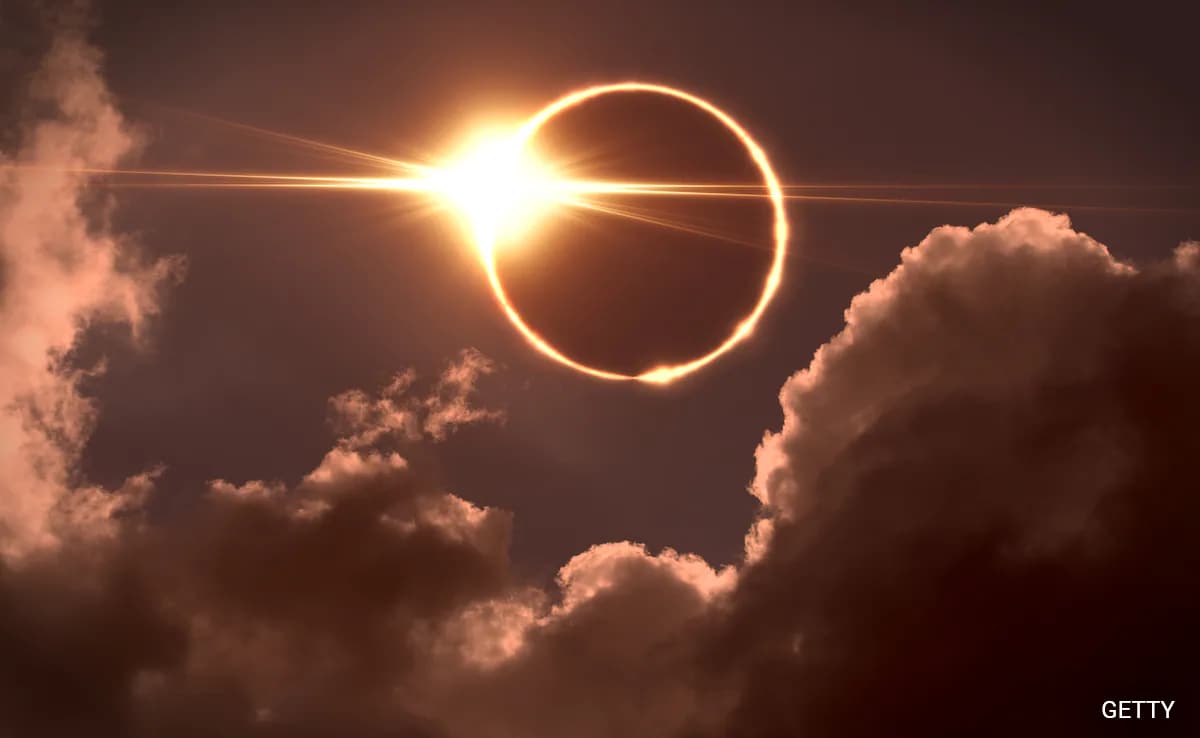
New Delhi:
India’s first space-based solar observatory, Aditya L1, is continuing to study the Sun but will miss today’s total solar eclipse, which will be visible across large swaths of North America. A total solar eclipse is a rare event, and people across the United States are organizing events ranging from skydiving to special flights to witness the celestial phenomenon.
For the first time in nearly a century, western and northern New York will experience a total solar eclipse. The path of a total solar eclipse — a narrow stretch of land where the moon completely blocks the sun — cuts through cities and plunges the United States into chaos.
NASA said in a statement about the event, “On April 8, 2024, a total solar eclipse will pass across North America, passing through Mexico, the United States, and Canada. A total solar eclipse occurs when the moon passes between the sun and Earth.” , completely blocking the surface of the sun. The sky will darken, like dawn or dusk. “
NASA also flies special research aircraft to chase shadows in many other experiments. Although the entire event will last several hours, the main spectacle – where day turns into night – is expected to last only about four minutes, when it will be completely dark.
But India’s Aditya L1 satellite will not be able to witness the event. This is not because the Indian Space Research Organization (ISRO) made a mistake, but because the satellite was placed in a position that provides an uninterrupted view of the sun 24×7, 365 days. Indian scientists chose a location to ensure that the satellite’s view would not be obscured by the eclipse.
ISRO Chairman S. Somanath told New Delhi TV.
India’s Aditya L1 spacecraft is placed in a halo orbit around Lagrangian Point 1 (L1) of the Sun-Earth system, which is approximately 1.5 million kilometers from Earth. The main advantage of a satellite placed in a halo orbit around the L1 point is the continuous observation of the Sun without occultation or eclipse. This provides greater advantages for real-time observations of solar activity and its impact on space weather.

Weighing nearly 1,500 kilograms, Aditya L1 is a scientific robotic satellite that continuously keeps an eye on the sun. This is India’s first mission dedicated to monitoring the sun, specifically to understand what happens when the sun is active. The solar observatory was built at a cost of Rs 400 crore.
In fact, the Aditya L1 satellite created its own artificial eclipse, effectively studying the sun using its special instrument, the Visible Emission Line Coronagraph (VELC). “Solar eclipses are produced in a coronagraph by eliminating light from the Sun’s disk,” Mr Somanath said.
Dr Dipankar Banerjee, a solar physicist at the Indian Institute of Astrophysics (IIAP) in Bengaluru, said the spacecraft provides scientists with the ability to observe and study the corona from space and from the ground during full solar activity. Opportunity. eclipse.
Dr. Banerjee will conduct some experiments on the ground in Dallas, Texas, USA, during today’s eclipse and compare these data with Aditya L1 data from the same observing period.
ISRO Aditya L1 satellite project director Nigar Shaji said the eclipse will not cause any changes in the sun.
“Nothing special is happening to the Sun due to the eclipse. The VELC spectral channel will operate in raster scan and sit-and-view operating modes [special observation modes] Observe the crown structure in the emission line. This will be a joint operation to corroborate ground-based observations,” Ms. Shaji told New Delhi TV.
Aditya L1 carries seven payloads and uses electromagnetic, particle and magnetic field detectors to observe the photosphere, chromosphere and the Sun’s outermost layer (corona). Taking advantage of the special vantage point L1, four payloads directly observe the Sun, and the remaining three payloads conduct in-situ studies of particles and fields at the Lagrangian point L1, thus providing important insights into the impact of solar dynamics in the interplanetary medium. scientific research.
Precautions:
NASA says: “Except during the brief total phase of a solar eclipse, when the Moon completely blocks the Sun’s bright surface, it is unsafe to view the Sun directly without specialized solar viewing goggles. View any part of the bright Sun Sunlight shining through a camera lens, binoculars, or a telescope without a specialized solar filter in front of the optic can cause immediate and severe eye damage.”
wait reply load…
Follow us on Google news ,Twitter , and Join Whatsapp Group of thelocalreport.in













